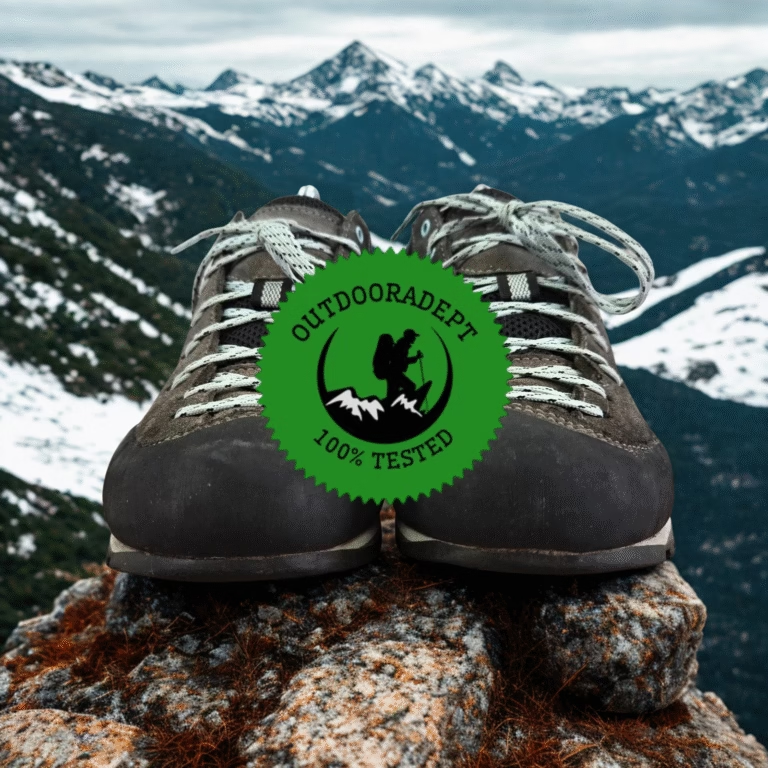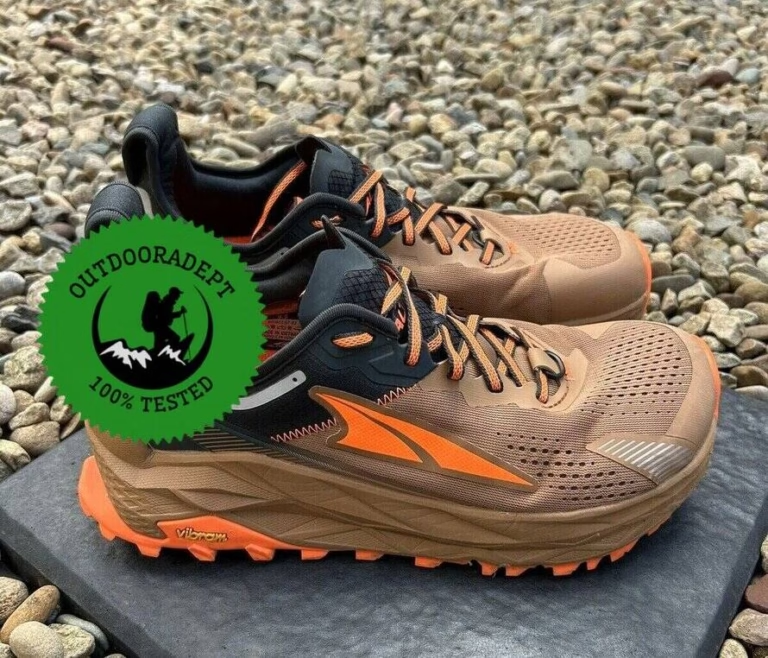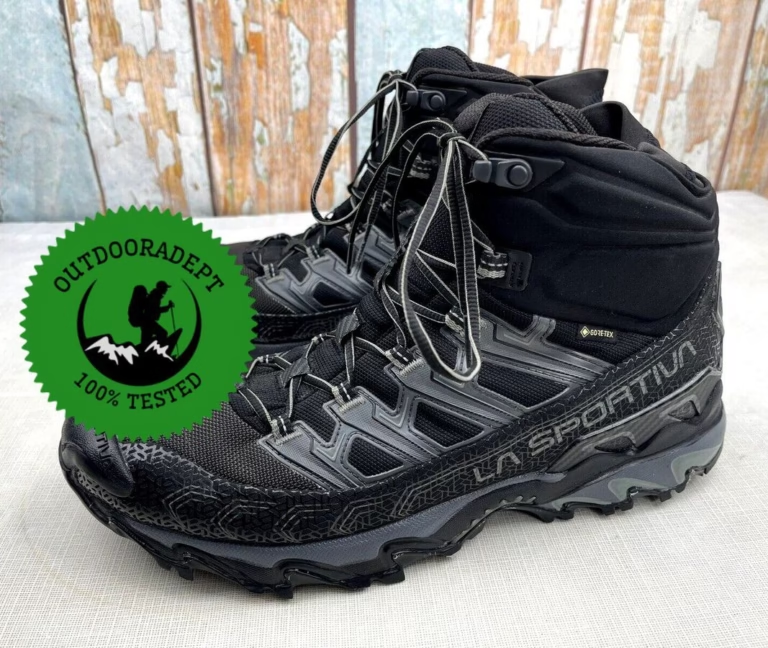Wondering how to jump into hiking? You’re not alone. Nearly 60 million Americans hit the trails annually, according to the latest Outdoor Industry Association report, with a 42% increase in participation since the pandemic began.
In this comprehensive guide, I’ll share my 15+ years of hiking expertise on how to get in shape for trails of all difficulties.
Whether you’re planning a casual day hike or preparing for a challenging thru-hike, you’ll find everything you need to prepare physically and mentally for your outdoor adventure.
What you’ll learn in this guide:
- How to assess your current fitness level for hiking
- Step-by-step training programs for beginners through advanced hikers
- Specialized preparation for different hiking types
- Essential gear selection to support your training
- Injury prevention techniques used by professional guides
- Mental preparation strategies for challenging trails
- Nutrition plans to maximize performance
So lace up your training shoes, and let’s build the strength, endurance, and skills you need to conquer any trail!
Step 1: Assess Your Current Hiking Fitness
Before lacing up your boots for a challenging trail, it’s crucial to honestly evaluate your starting point. This assessment will help you tailor a training program that builds on your strengths and addresses your weaknesses.
Self-Assessment Checklist
Take a moment to evaluate your current fitness level with this quick assessment:
- Cardiovascular Endurance: Can you walk briskly for 30 minutes without stopping?
- Leg Strength: Can you climb 3-4 flights of stairs without significant fatigue?
- Core Stability: Can you hold a plank position for at least 30 seconds?
- Balance: Can you stand on one leg for 15 seconds without wobbling?
- Previous Hiking Experience: When was your last hike and how challenging was it?
- Current Activity Level: How many days per week do you currently exercise?
- Existing Health Conditions: Do you have any joint issues, heart concerns, or other limitations?
“Understanding your baseline fitness is the most important first step,” says Dr. Jennifer Roberts, sports medicine physician at Mountain Health Clinic. “Most hiking injuries I treat stem from people overestimating their initial capabilities.”
Key Metrics to Track
As you begin training, monitor these specific indicators of hiking fitness:
- Resting Heart Rate: Check first thing in the morning; decreases indicate improved fitness
- Recovery Heart Rate: How quickly your pulse returns to normal after exertion
- Time to Fatigue: How long you can maintain activity before needing rest
- Perceived Exertion: Rate your effort level from 1-10 during workout activities
I personally track these metrics using a fitness watch, which has helped me objectively monitor my improvements over time.
When I began training for the Via Transilvanica trail, my recovery heart rate improved by 15% after just six weeks of consistent training.
When to Consult a Professional
Consider consulting a healthcare provider before starting your training program if you:
- Have been sedentary for more than six months
- Experience chest pain or dizziness during exercise
- Have existing heart, lung, or joint conditions
- Are over 40 and new to regular exercise
- Have had previous injuries that impact mobility
Step 2: Build Core Hiking Fitness
Hiking demands a unique combination of physical attributes that I’ve learned to develop through years on the trails. This foundation program targets the specific fitness components most critical for hiking success.
Cardiovascular Endurance
The ability to sustain effort over hours of hiking is perhaps the most important element of trail fitness. Here’s how to build it effectively:
Base-Building Activities:
- Brisk Walking: Start with 30 minutes 3-4 times weekly, gradually increasing to 60-90 minutes
- Stair Climbing: One of the best hiking-specific cardio exercises (I use the stairwell in my apartment building)
- Incline Treadmill: Set to 5-15% grade to simulate uphill hiking
- Cycling or Swimming: Excellent low-impact alternatives for active recovery days
Progressive Training Tips:
- Increase duration before intensity
- Add 10% to your longest session each week
- Incorporate one longer session weekly (60+ minutes)
- Include interval training once weekly (1 minute hard effort, 2 minutes recovery)
According to a study in the Journal of Sports Medicine, hikers with strong cardiovascular bases experienced 41% less fatigue on sustained climbs compared to those who focused only on strength training.
Strength Training for Hikers
While cardio builds endurance, strength training prepares your body for the specific demands of hiking with weight on varied terrain.
Key Muscle Groups to Target:
- Quadriceps: Primary muscles used in ascents
- Hamstrings and Glutes: Critical for descents and stability
- Calves: Support ankle stability and uphill power
- Core: Maintains balance with a pack
- Upper Body: Helps with trekking poles and scrambling
Essential Hiking Strength Exercises:
- Weighted Step-ups: Simulates climbing with a pack
- Stand facing a bench or step (12-18 inches high)
- Step up with right foot, bringing left foot up to meet it
- Step down with right foot, then left
- Perform 10-15 reps, then switch lead legs
- Add weight gradually to simulate pack weight
- Bulgarian Split Squats: Develops single-leg stability
- Stand 2-3 feet in front of a bench
- Place top of back foot on bench
- Lower into a lunge position, keeping front knee aligned with ankle
- Perform 8-12 reps per leg
- Weighted Walking Lunges: Builds hiking-specific strength
- Take a step forward into a lunge position
- Push through front heel to bring back leg forward into next lunge
- Continue for 20-30 steps
- Add dumbbells for increased challenge
- Planks and Side Planks: Develops core stability
- Hold standard plank for 30-60 seconds
- Progress to side planks, mountain climbers, and plank shoulder taps
“The most common mistake I see is hikers focusing only on leg strength,” notes Alex Harrington, certified strength coach and avid mountaineer. “Without core stability, you’ll struggle with balance on technical terrain regardless of leg strength.”
Balance and Proprioception
Uneven trail surfaces demand excellent proprioception and balance to prevent ankle injuries and falls. These exercises develop the stabilizer muscles crucial for trail safety:
- Single-Leg Balance: Progress from 15 seconds to 60+ seconds per leg
- Wobble Board or BOSU Training: Creates instability to strengthen ankles
- Single-Leg Romanian Deadlifts: Develops hamstring strength and balance
- Walking on Uneven Surfaces: Practice on sand, grass, or rocky areas
Flexibility and Mobility
Flexibility prevents injury and enhances recovery. Focus on these key areas:
Priority Stretches for Hikers:
- Hip Flexors: Often tight from desk jobs and uphill hiking
- Hamstrings: Critical for preventing strains on descents
- Calves: Reduces Achilles tension and foot pain
- IT Band: Prevents knee pain on long descents
- Upper Back: Relieves tension from pack carrying
Hold each stretch for 30-60 seconds after workouts when muscles are warm.
Step 3: Train for Your Specific Hiking Type
Different hiking experiences demand specialized preparation. I’ve learned to adapt my training based on the specific challenges each type presents.
Train for Day Hikes
Perfect for beginners or as weekend adventures, day hikes typically last 2-6 hours with moderate elevation gain.
Training Focus:
- Cardiovascular endurance for 3-4 hours of continuous activity
- Basic strength for uneven terrain
- Minimal pack weight training (usually under 10 pounds)
Specialized Preparation:
- Weekly walks of increasing duration (build to 2 hours minimum)
- One strength session weekly focusing on legs and core
- Practice with the actual daypack you’ll use, gradually adding weight
- Incorporate one hilly route weekly to build climbing strength
During my early hiking days, I prepared for weekend hikes by walking to work daily (3 miles each way) with gradually increasing pack weight. This simple approach built sufficient fitness for most day hikes under 8 miles.
Train for Backpacking
Multiday adventures require carrying everything you need, significantly increasing physical demands.
Training Focus:
- Load-bearing strength for heavier packs (25-40+ pounds)
- Endurance for consecutive days of hiking
- Back-to-back training days to simulate multiday treks
Specialized Preparation:
- Weighted training hikes starting at 15 pounds, increasing by 5 pounds weekly
- Upper body and core strengthening for pack carrying comfort
- Practice with your fully loaded pack at least 3-4 weeks before your trip
“The biggest backpacking training mistake is not practicing with your actual gear,” says Linda Martinez, PCT section hiker and backpacking instructor. “Your body needs to adapt to your specific pack’s weight distribution and how it affects your center of gravity.”
Train for Thru-Hiking
These epic journeys spanning hundreds or thousands of miles require exceptional preparation.
Training Focus:
- Maximum endurance base
- Injury prevention
- Mental resilience
- Terrain-specific adaptation
Specialized Preparation (Minimum 6 Months):
- Build to 15+ mile training hikes with full pack weight
- Incorporate back-to-back weekend hikes
- Train for terrain specifics (desert heat, mountain elevation, etc.)
- Practice foot care and blister prevention
When preparing for my Via Transilvanica thru-hike, I spent three months gradually building base fitness, followed by three months of specialized training with back-to-back weekend hikes carrying full pack weight.
Train for Summit Hikes
High-peak objectives often involve technical terrain and significant elevation gain.
Training Focus:
- Maximizing leg strength for sustained climbs
- Technical footwork on varied terrain
- Upper body strength for scrambling sections
Specialized Preparation:
- High-intensity interval training for cardiovascular development
- Maximum incline treadmill or stair climbing with weight
- Climbing-specific exercises (step-ups, lunges, calf raises)
- Technical skills practice on similar terrain when possible
“For summit attempts, nothing replaces vertical training,” explains Michael Chen, mountain guide and fitness trainer. “Find the tallest building, mountain, or stadium steps in your area and climb them repeatedly. Your body must learn to manage lactic acid buildup during continuous ascents.”
Train for Canyoneering
This specialized hiking form combines technical skills with unique physical demands.
Training Focus:
- Upper body and grip strength for rope work
- Flexibility for navigating narrow passages
- Technique for scrambling and down-climbing
Specialized Preparation:
- Pull-up and grip strength training
- Hip mobility and flexibility work
- Practice technical skills (rappelling, rope management)
- Swimming and water confidence for water-based canyons
Step 4: Prevent Common Hiking Injuries
Based on both personal experience and sports medicine research, these are the most effective strategies to avoid common hiking injuries.
Preventing Ankle Sprains and Rolls
The most frequent hiking injury can be largely prevented with proper preparation.
Prevention Strategies:
- Proprioception Training: Balance exercises on unstable surfaces
- Ankle Strengthening: Resistance band exercises in all directions
- Proper Footwear: Boots with adequate ankle support for your terrain
- Trekking Pole Usage: Reduces weight on ankles during descents
“After treating hundreds of hiking injuries, I can confidently say that proprioceptive training reduces ankle injury risk by approximately 30%,” states Dr. Roberts. “Just 5 minutes of daily balance work creates significant protection.”
Preventing Knee Pain (“Hiker’s Knee”)
Patellofemoral pain syndrome and IT band friction syndrome commonly affect hikers, especially during descents.
Prevention Strategies:
- Eccentric Quad Strengthening: Controlled lowering during squats and steps
- IT Band Stretching and Foam Rolling: Reduces tension on outer knee
- Proper Downhill Technique: Shorter steps and slight knee bending
- Trekking Poles: Redistribute impact forces away from knees
My personal battle with IT band syndrome was resolved by adopting a three-part approach: daily foam rolling, strengthening my hip abductors with resistance band exercises, and using trekking poles on all significant descents.
Preventing Lower Back Pain
Pack carrying and uneven terrain can strain the lower back, particularly with improper technique.
Prevention Strategies:
- Core Strengthening: Focus on deep stabilizers (transverse abdominis)
- Proper Pack Fitting: Ensure weight distribution on hips, not shoulders
- Hip Flexor Stretching: Reduces pull on lower spine
- Proper Lifting Technique: When handling pack or crossing obstacles
Preventing Foot Issues (Blisters, Neuromas, Plantar Fasciitis)
Foot problems can quickly end a hiking trip regardless of overall fitness.
Prevention Strategies:
- Proper Footwear Fitting: Allow ½ inch toe room and no heel slippage
- Graduated Training: Build foot toughness progressively
- Sock System: Moisture-wicking liner with cushioned outer sock
- Hot Spot Management: Address irritation immediately before blisters form
- Foot Strengthening: Barefoot walking on safe surfaces, toe exercises
“Modern hiking boots are designed to fit differently than casual shoes,” explains Jennifer Woods, professional boot fitter. “They should feel snug around the midfoot but with ample toe room for downhill hiking when your foot slides forward.”
Step 5: Get the Right Training Gear
The right equipment enhances training effectiveness and prevents injury. Here’s what I’ve found most valuable for hiking-specific conditioning.
Indoor Training Gear
Footwear
- Trail Running Shoes: Use actual hiking footwear for sport-specific training
- Minimal/Zero-Drop Shoes: Build foot strength during controlled exercises
Resistance Training Tools
- Dumbbells or Kettlebells: For weighted hiking-specific exercises
- Resistance Bands: For ankle strengthening and hip stabilization
- Stability Tools: BOSU ball, wobble board, or balance disc
- Step Platform or Bench: For step-ups and elevated exercises
Cardio Equipment
- Stair Climber: Most hiking-specific cardio machine
- Treadmill with Incline: For simulating uphill sections
- Rowing Machine: Complements hiking with upper body work
Outdoor Training Gear
Hiking Footwear Selection
Your boots or trail runners are your most critical piece of gear. Selection criteria should include:
- Terrain Appropriateness: Lightweight trail runners for gentle terrain; mid-cut boots for rugged or off-trail hiking
- Weight-to-Support Ratio: Heavier boots provide more support but require more energy
- Waterproofing Considerations: Waterproof for wet conditions; breathable for hot climates
- Proper Fit Guidelines:
- Shop late in day when feet are slightly swollen
- Wear your actual hiking socks
- Ensure ½ inch toe room
- Test on inclines to check for heel lift
- Break in gradually before major hikes
Trekking Poles
Proper pole usage reduces impact forces by up to 25% according to research from the Journal of Sports Sciences.
Selection Tips:
- Material: Aluminum (durable) vs. carbon fiber (lightweight)
- Adjustability: Three-section poles offer maximum versatility
- Grip Material: Cork reduces blisters; rubber insulates in cold
Proper Technique:
- Uphill: Shorten poles and place in front to assist in pulling yourself upward
- Downhill: Lengthen poles and place in front to brake descent
- Flat Terrain: Adjust to create 90° elbow angle for optimal efficiency
- Stream Crossings: Use poles for added stability points
Training Backpacks
Start with lighter weights and gradually increase as your strength builds:
- For day hike training: 15-25 liter pack with hip belt
- For backpacking training: Use your actual expedition pack
- Begin with 10-15 pounds, increase gradually by 5% of body weight per week
- Distribute weight properly: heaviest items center and close to back
Step 6: Optimize Your Nutrition
Proper nutrition dramatically impacts both training effectiveness and on-trail performance. I’ve refined these strategies through years of trial and error.
Daily Nutrition for Training
Macronutrient Balance:
- Protein: 1.2-1.6g per kg body weight for muscle repair
- Carbohydrates: 4-5g per kg for training energy and glycogen restoration
- Healthy Fats: 1g per kg for sustained energy and inflammation reduction
Micronutrient Considerations:
- Iron: Critical for oxygen transport, especially for female hikers
- Vitamin D and Calcium: Supports bone health for impact activities
- Magnesium: Aids in muscle recovery and prevents cramping
- B Vitamins: Essential for energy metabolism
Pre-Hike Nutrition Strategies
Evening Before:
- Carbohydrate-rich dinner (pasta, rice, potatoes)
- Moderate protein serving
- Adequate hydration (urine should be pale yellow)
Morning Of:
- Easily digestible carbohydrates (oatmeal, toast, bananas)
- Moderate protein to sustain energy
- 16-20oz water with electrolytes
“Slow-release energy foods such as porridge, muesli, and bananas are excellent pre-hike options,” notes sports nutritionist Dr. Sarah Chen. “They provide sustained energy without the crash associated with simple sugars.”
On-Trail Nutrition
Fueling Guidelines:
- Consume 200-300 calories per hour during activity
- Eat before you feel hungry to prevent bonking
- Balance quick-energy foods with more substantial options
- Adjust intake based on temperature and exertion level
Hydration Protocols:
- Drink approximately 0.5-1L per hour depending on conditions
- Include electrolytes for hikes exceeding 2 hours
- Monitor urine color as hydration indicator
Before my Zugspitze summit attempt, I experimented with various nutrition strategies during training hikes. I discovered that consuming small amounts (100-150 calories) every 30 minutes worked better for me than larger meals less frequently.
Step 7: Develop Mental Toughness
The mental aspect of hiking is often overlooked but can make or break your experience, especially on challenging routes.
Mindset Training
Goal Setting:
- Establish clear, specific objectives for each hike
- Break challenging hikes into manageable segments
- Create both outcome goals and process goals
Visualization Techniques:
- Mentally rehearse successfully completing difficult sections
- Visualize positive responses to potential challenges
- Practice during training to create mental blueprints
Positive Self-Talk:
- Develop motivational mantras for difficult moments
- Replace negative thoughts with constructive alternatives
- Focus on previous successes during challenging sections
“The mind often gives up before the body,” explains sports psychologist Dr. Rebecca Moore. “Creating mental checkpoints rather than focusing on the entire distance helps hikers maintain motivation on long trails.”
Stress Management
Breathing Techniques:
- Tactical breathing (4-count inhale, 4-count hold, 4-count exhale)
- Rhythmic breathing synchronized with steps
- Deep diaphragmatic breathing during rest breaks
Mindfulness Practices:
- Present-moment awareness reduces anxiety
- Focus on immediate surroundings rather than distance remaining
- Body scan technique to identify and release tension
During a particularly challenging section of the Via Transilvanica with unexpected weather changes, I relied heavily on segmenting the trail mentally and focusing only on reaching the next landmark rather than the day’s entire distance.
Step 8: Follow a Structured Training Program
Based on both exercise science principles and my personal experience, these programs provide structured approaches for hikers of different levels.
6-Week Beginner Program
Perfect for preparing for moderate day hikes (under 6 miles with moderate elevation).
Weekly Structure:
- 3-4 training days per week
- Focus on building baseline fitness
- Gradual introduction to hiking-specific movements
Week-by-Week Progression:
| Week | Cardio | Strength | Hiking-Specific |
|---|---|---|---|
| 1 | 3×30 min walks | 2×15 min bodyweight circuit | Balance exercises 2x weekly |
| 2 | 3×40 min walks | 2×20 min strength circuit | Add 5 min stair climbing |
| 3 | 2×45 min walks, 1x hills | 2x full-body strength | Weighted carries 10 min |
| 4 | 3×45 min walks (1 with light pack) | 2x strength with added resistance | Practice hike: 2 miles flat |
| 5 | 2×60 min walks, 1x hills with pack | 2x hiking-specific strength | Practice hike: 3 miles with some elevation |
| 6 | 2×60 min walks, 1x longer hike prep | 1x strength maintenance | Practice hike: 4-5 miles with hills |
9-Week Intermediate Program
Designed for backpacking trips or challenging day hikes with significant elevation.
Weekly Structure:
- 4-5 training days per week
- Periodized approach with build and recovery weeks
- Increased focus on hiking-specific conditioning
Sample Microcycle (Weeks 4-6):
| Day | Training Focus | Details |
|---|---|---|
| Monday | Strength Training | Lower body and core focus, 45 minutes |
| Tuesday | Cardio Endurance | 60-minute incline walking or stair climbing |
| Wednesday | Active Recovery | Light mobility work and stretching |
| Thursday | Strength Training | Total body with pack weight, 45 minutes |
| Friday | High-Intensity Interval Training | 30 minutes alternating high and low intensity |
| Saturday | Long Training Hike | 6-10 miles with appropriate pack weight |
| Sunday | Complete Rest | Focus on sleep and nutrition |
6-Month Advanced Program
For summit attempts, thru-hikes, or technical mountain objectives.
Periodization Structure:
- Months 1-2: Base building phase
- Months 3-4: Strength and endurance development
- Month 5: Peak training phase
- Month 6: Tapering and specialized preparation
Key Workout Types:
- Weighted Stair Climbs
- Find a tall building or stadium
- Start with 10% body weight in pack
- Build to 60-90 minutes continuous climbing
- Simulate target elevation gain over time
- Back-to-Back Long Hikes
- Saturday: Long duration (60-80% of target distance)
- Sunday: Shorter but more intense (hills and technical terrain)
- Environmental Specificity Training
- Heat training for desert hikes
- Cold exposure for alpine objectives
- Technical terrain practice for scrambling routes
- Night hiking practice for pre-dawn summit attempts
“The secret to my successful completion of the PCT wasn’t my peak fitness,” shares thru-hiker Marie Thompson. “It was my body’s adaptation to consecutive hiking days that made the difference. Training back-to-back days was more valuable than any single long workout.”
After 15+ years on trails worldwide, I’ve learned that hiking fitness isn’t about a specific level – it’s about building the right foundation for your goals.
Whether you’re preparing for gentle forest walks or challenging mountain traverses, consistency trumps intensity. Follow this progressive approach, listen to your body, and enjoy becoming trail-ready.
The key to success is starting early, combining structured training with actual trail time, and gradually building both physical strength and technical skills.
Share your hiking goals and experiences in the comments below!







